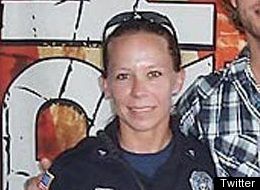I found this gem of a paper over at Small Wars Journal and wanted to get it out to the FJ readership to consume as well. If you follow the link to SWJ, you can actually talk with the author in the comments section of their post.
Basically, Mr. Wheeler was reinforcing the ideas that Mr. Cline talked about, and tried to convey how important these types of operations would be to the US goal in the GWOT. I agree, and to me, we should be trying to turn every captured Taliban and Al Qaeda operative we can. Or they can sit in that resort called Gitmo and rot away.
As to any new thoughts on pseudo operations? I think for today’s enemy, the Ft. Hood Shooting and the Underwear Bomber attack should be closely examined with the lens of pseudo operations trade craft development. This was some radical stuff, and the guy that turned these two into human weapons was the cleric Anwar al-Awlaki. He is using religion and the internet in order to reach out to folks that he could potentially convert, and he is succeeding. That is powerful, and to replicate that and find out the method, would be very valuable. –Matt
——————————————————————
Pseudo-Operations to Neutralize Extremist Networks, Insurgents, and Terrorists
by Major Seth Wheeler
Terrorism is a threat to the stability and national security of many countries, and has undermined countless governments. However, technological improvements within the last century have allowed greater, more spectacular attacks and broadened the means by which terrorists may broadcast their message. Although previous terrorist attacks against United States citizens have drawn a measure of global attention, the world became acutely aware of the effects of terrorism on 11 September 2001 during the World Trade Center attack orchestrated by Osama Bin Laden and his terror group al Qaeda. The psychological impact of such a devastating attack—conducted so efficiently at such little cost to the attacker—jumpstarted a global level of effort to defeat terrorism and extremism. Indeed, Secretary of Defense Robert Gates identified terrorism as a Global National Defense priority in his 2008 National Defense Strategy, and discussed terrorism on 15 occasions throughout his 23-page report. Degrading terrorism requires full-spectrum deterrence and counter strategies: the incorporation of effective foreign policy measures against state-sponsors of terrorism; international security forces assistance programs to ensure competent counter-terror skill-sets within our allies’ ranks; military or police action to kinetically defeat armed resistance or restore sovereignty; and other internal defense and development programs to deny terrorists sanctuary or resources and political advantage.
That stated, terrorists’ geographic or political sanctuaries that the United States cannot directly or indirectly influence through foreign policy initiatives will remain in certain pockets of the world, such as the remaining insurgent-terror organization FARC controlled areas of Colombia or Somalia. Assuming that some terrorists will remain irreconcilable for a variety of reasons not discussed here, and that comprehensive deterrence strategies or counter-terror efforts may prove ineffective, then how does the United States influence or neutralize irreconcilable terrorists protected by a foreign population? What tools can be implemented to eradicate, deflect, isolate, or neutralize typically suicidal extremists employing terror as a weapon? One consideration is pseudo-operations. Penetration of terrorist and insurgent groups by foreign services is inherently difficult, due to the existing mistrust within the organization and extensive vetting required for membership. Pseudo-operations may overcome these challenges and create conditions congruent with the interests of the United States, as several case studies will demonstrate in a later section. However, an overview of what pseudo-operations are and what they can do is first necessary.
Download the full article: Pseudo-Operations to Neutralize Extremist Networks, Insurgents, and Terrorists
*****
Major Seth Wheeler, U.S. Army, graduated with a M.S. in Defense Analysis – Irregular Warfare from the Naval Postgraduate School in December, 2009. He is currently attending CGSC ILE at Fort Belvoir, VA, and will join the 5th Special Forces Group (Airborne) in June, 2010.The views expressed above are those of the author and do not reflect the official policy or position of the Department of the Army, Department of Defense, or the U.S. Government.
Link to post here.
